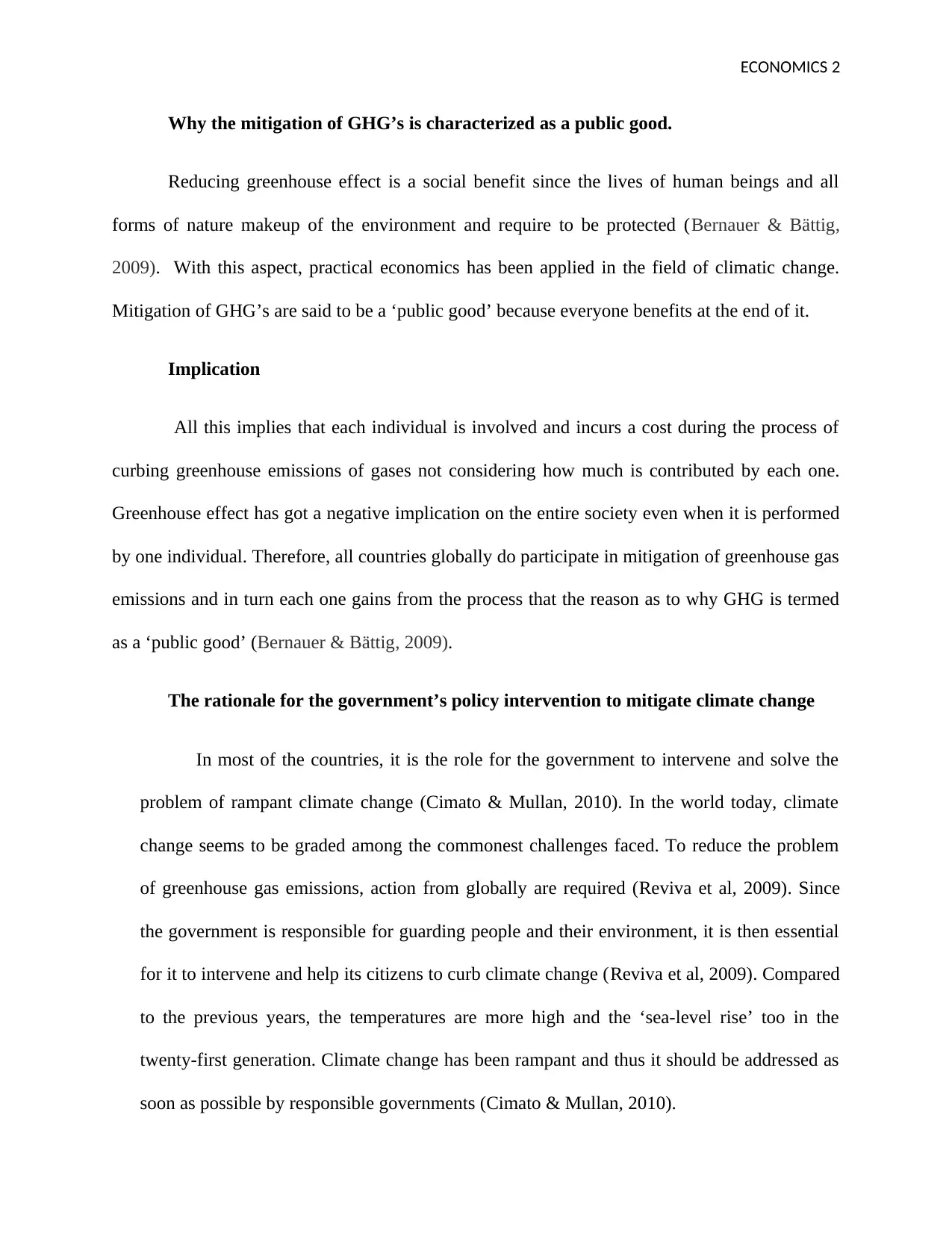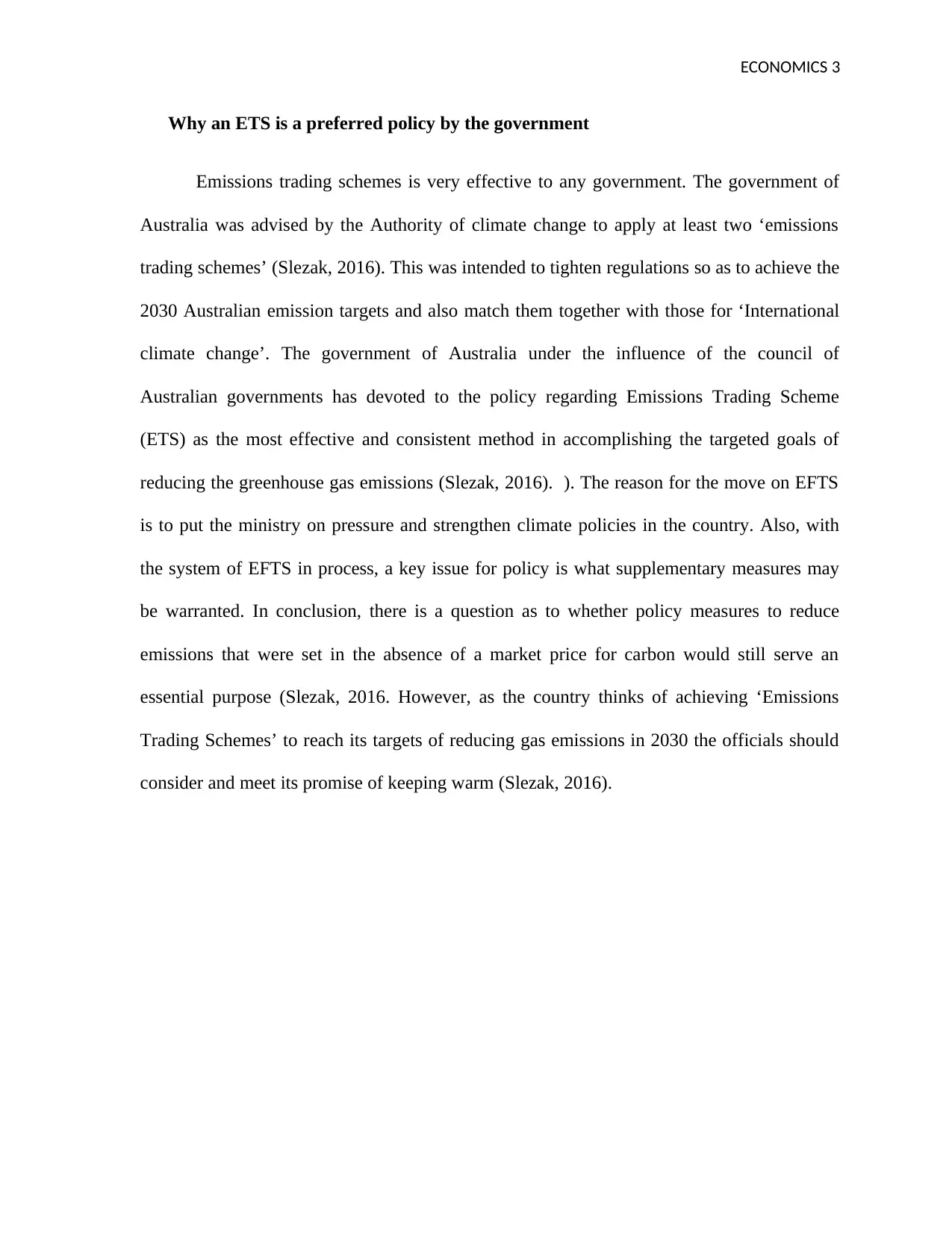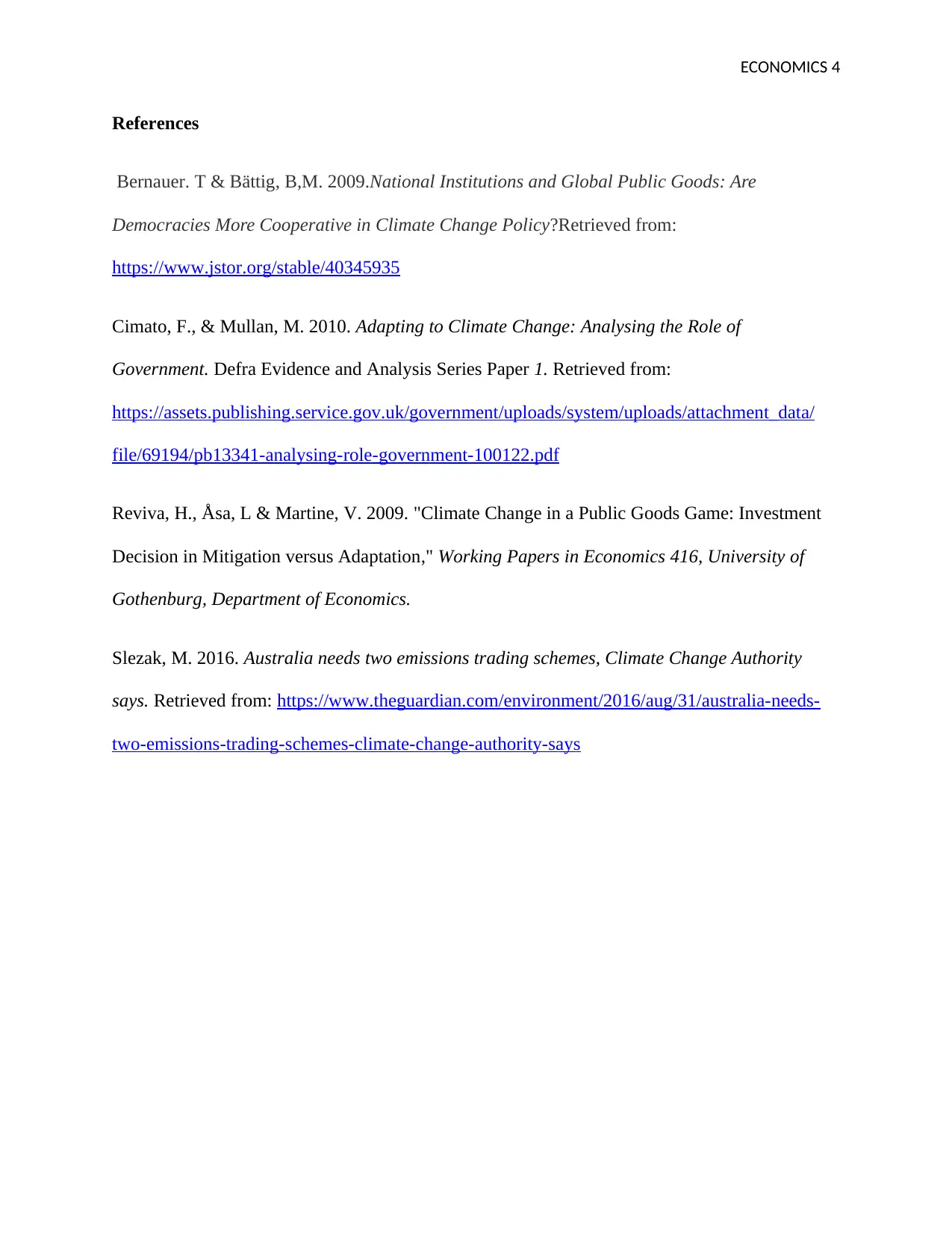Economics 1 Assignment: Public Goods, ETS, and Climate Change Policy
VerifiedAdded on 2022/11/18
|4
|756
|365
Homework Assignment
AI Summary
This economics assignment examines the characterization of greenhouse gas (GHG) mitigation as a public good, emphasizing the shared benefits for all individuals and the rationale behind governmental policy interventions to address climate change. The assignment explores the implications of GHG emissions on society and explains why all countries globally participate in mitigation efforts, thereby defining it as a public good. Furthermore, it discusses the government's role in mitigating climate change, highlighting the increasing temperatures and sea-level rise. The assignment also analyzes the effectiveness of Emissions Trading Schemes (ETS) as a preferred policy instrument, referencing the Australian government's approach and the advice from the Climate Change Authority. The conclusion suggests that while ETS is crucial, supplementary measures might also be warranted to achieve emission reduction targets. The assignment uses several academic references to support its arguments.
1 out of 4











![[object Object]](/_next/static/media/star-bottom.7253800d.svg)